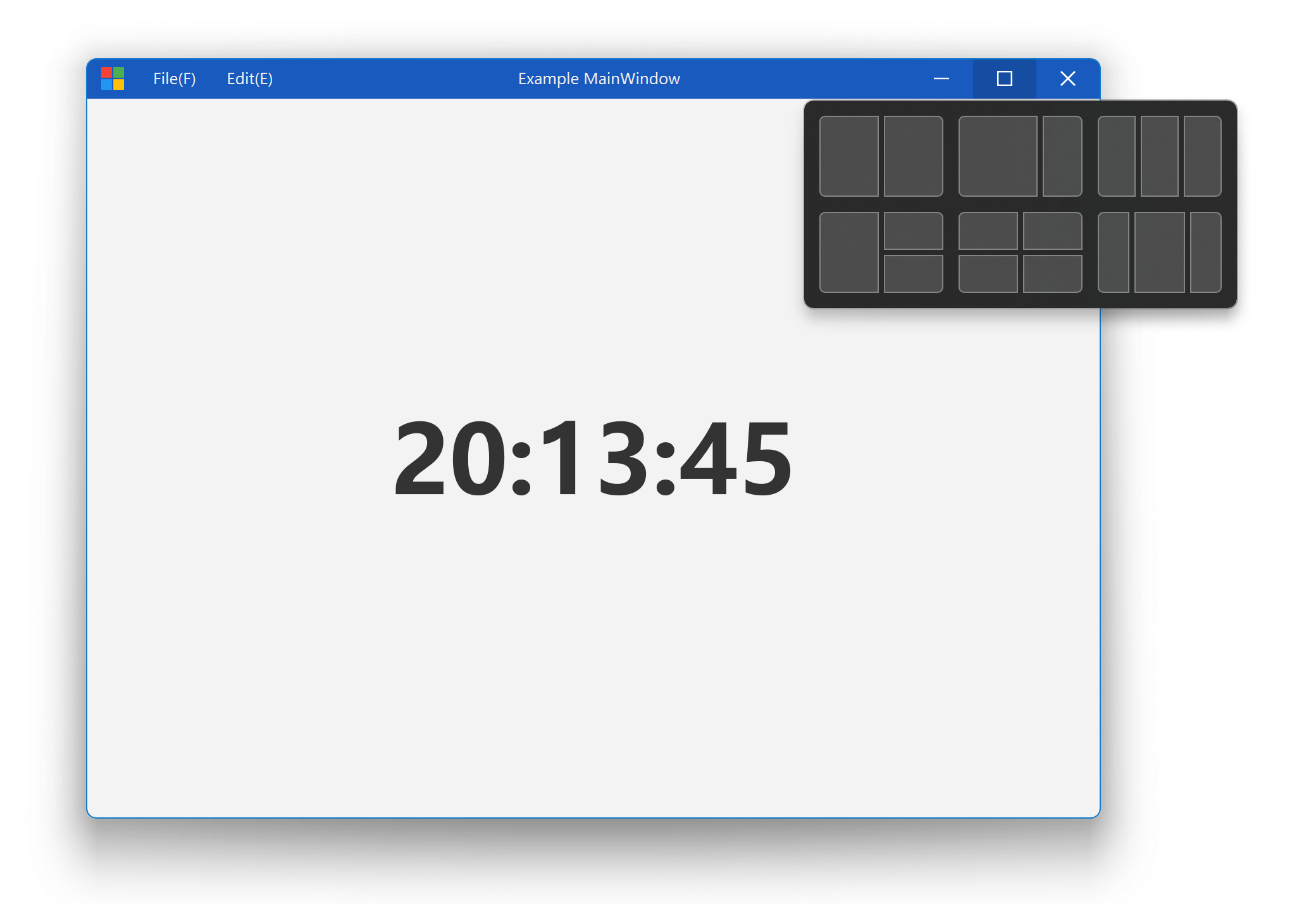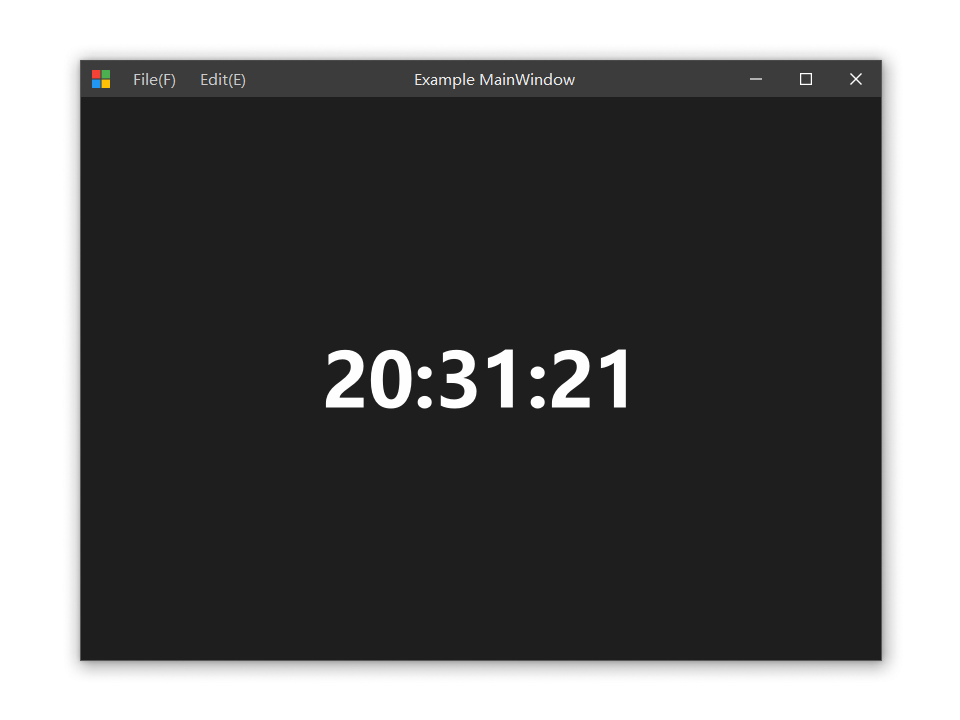Cross-platform window customization framework for Qt Widgets and Qt Quick.
This project inherited most of wangwenx190 FramelessHelper implementation, with a complete refactoring and upgrading of the architecture.
Feature requests are welcome.
You can join our Discord channel. You can share your findings, thoughts and ideas on improving / implementing FramelessHelper functionalities on more platforms and apps!
- Microsoft Windows
- Apple macOS (11+)
- GNU/Linux
- Full support of Windows 11 Snap Layout
- Better workaround to handle Windows 10 top border issue
- Support Mac system buttons geometry customization
- Simpler APIs, more detailed documentations and comments
| macOS | Linux (Ubuntu 20.04) |
|---|---|
 |
 |
| Component | Requirement | Details |
|---|---|---|
| Qt | >=5.12 | Core, Gui, Widgets, Quick |
| Compiler | >=C++17 | MSVC 2019, GCC, Clang |
| CMake | >=3.19 | >=3.20 is recommended |
- Windows
- MSVC: 2019, 2022
- MinGW (GCC): 13.2.0
- macOS
- Clang 14.0.3
- Ubuntu
- GCC: 9.4.0
- Qt 5.12 or higher
- qmsetup
-
QWINDOWKIT_BUILD_DOCUMENTATIONS- If you have installed
Doxygen, you can enable this option so that the documentations will also be built and installed. - If not, you can read the comments in qdoc style in
cppfiles to get detailed usages of the public APIs.
- If you have installed
-
QWINDOWKIT_ENABLE_WINDOWS_SYSTEM_BORDERS- If you don't want the system borders on Windows 10/11, you can disable this option.
- If so, the Windows 10 top border issue will disappear. However, part of the client edge area will be occupied as the resizing margins.
-
QWINDOWKIT_ENABLE_QT_WINDOW_CONTEXT- If you want to use pure Qt emulated frameless implementation, you can enable this option.
- If so, all system native features will be lost.
-
QWINDOWKIT_ENABLE_STYLE_AGENT- Select whether to exclude the style component by disabling this option according to your requirements and your Qt version.
git clone --recursive https://github.com/stdware/qwindowkit
cd qwindowkit
cmake -B build -S . \
-Dqmsetup_DIR=<dir> \ # Optional
-DCMAKE_INSTALL_PREFIX=/path/install \
-G "Ninja Multi-Config"
cmake --build build --target install --config Debug
cmake --build build --target install --config ReleaseYou can also include this directory as a subproject if you choose CMake as your build system.
For other build systems, you need to install with CMake first and include the corresponding configuration files in your project.
cmake -B build -DQWindowKit_DIR=/path/install/cmake/QWindowKitfind_package(QWindowKit REQUIRED)
target_link_libraries(widgets_app PUBLIC QWindowKit::Widgets)
target_link_libraries(quick_app PUBLIC QWindowKit::Quick)# WidgetsApp.pro
include("/path/install/share/QWindowKit/qmake/QWKWidgets.pri")
# QuickApp.pro
include("/path/install/share/QWindowKit/qmake/QWKQuick.pri")TODO
The following initialization should be done before any widget constructs.
#include <QWKQuick/qwkquickglobal.h>
int main(int argc, char *argv[])
{
QGuiApplication::setAttribute(Qt::AA_DontCreateNativeWidgetSiblings)
// ...
}First, setup WidgetWindowAgent for your top QWidget instance. (Each window needs its own agent.)
#include <QWKWidgets/widgetwindowagent.h>
MyWidget::MyWidget(QWidget *parent) {
// ...
auto agent = new QWK::WidgetWindowAgent(this);
agent->setup(this);
// ...
}If you don't want to derive a new widget class or change the constructor, you can initialize the agent after the window constructs.
auto w = new MyWidget();
auto agent = new QWK::WidgetWindowAgent(w);
agent->setup(w);Then, construct your title bar widget, without which the window lacks the basic interaction feature, and it's better to put it into the window's layout.
You can use the WindowBar provided by WidgetFrame in the examples as the
container of your title bar components.
Let WidgetWindowAgent know which widget the title bar is.
agent->setTitleBar(myTitleBar);Next, set system button hints to let WidgetWindowAgent know the role of the child widgets, which is important for the
Snap Layout to work.
agent->setSystemButton(QWK::WindowAgentBase::WindowIcon, myTitleBar->iconButton());
agent->setSystemButton(QWK::WindowAgentBase::Minimize, myTitleBar->minButton());
agent->setSystemButton(QWK::WindowAgentBase::Maximize, myTitleBar->maxButton());
agent->setSystemButton(QWK::WindowAgentBase::Close, myTitleBar->closeButton());Doing this does not mean that these buttons' click events are automatically associated with window actions, you still need to manually connect the signals and slots to emulate the native window behaviors.
On macOS, this step can be skipped because it is better to use the buttons provided by the system.
Last but not least, set hit-test visible hint to let WidgetWindowAgent know other widgets that desire to receive mouse events.
agent->setHitTestVisible(myTitleBar->menuBar(), true);The rest region within the title bar will be regarded as the draggable area for the user to move the window.
Make sure you have registered QWindowKit into QtQuick:
#include <QWKQuick/qwkquickglobal.h>
int main(int argc, char *argv[])
{
// ...
QQmlApplicationEngine engine;
// ...
QWK::registerTypes(&engine);
// ...
}Then you can use QWindowKit data types and classes by importing it's URI:
import QtQuick 2.15
import QtQuick.Window 2.15
import QWindowKit 1.0
Window {
id: window
visible: false // We hide it first, so we can move the window to our desired position silently.
Component.onCompleted: {
windowAgent.setup(window)
window.visible = true
}
WindowAgent {
id: windowAgent
// ...
}
}You can omit the version number or use "auto" instead of "1.0" for the module URI if you are using Qt6.
See examples for more demo use cases. The examples have no High DPI support.
- QWindowKit Internals [TODO]
- FramelessHelper Related
- Once you have made the window frameless, it will not be able to switch back to the system border.
- There must not be any internal child widget with
Qt::WA_NativeWindowproperty enabled, otherwise the native features and display may be abnormal. Therefore, do not set any widget that has calledQWidget::winId()orQWidget::setAttribute(Qt::WA_NativeWindow)as a descendant of a frameless window.- If you really need to move widgets between different windows, make sure that the widget is not a top-level window and wrap it with a frameless container.
- Fix 5.15 window abnormal behavior
- More documentations
- When do we support Linux native features?
QWindowKit is licensed under the Apache 2.0 License.

